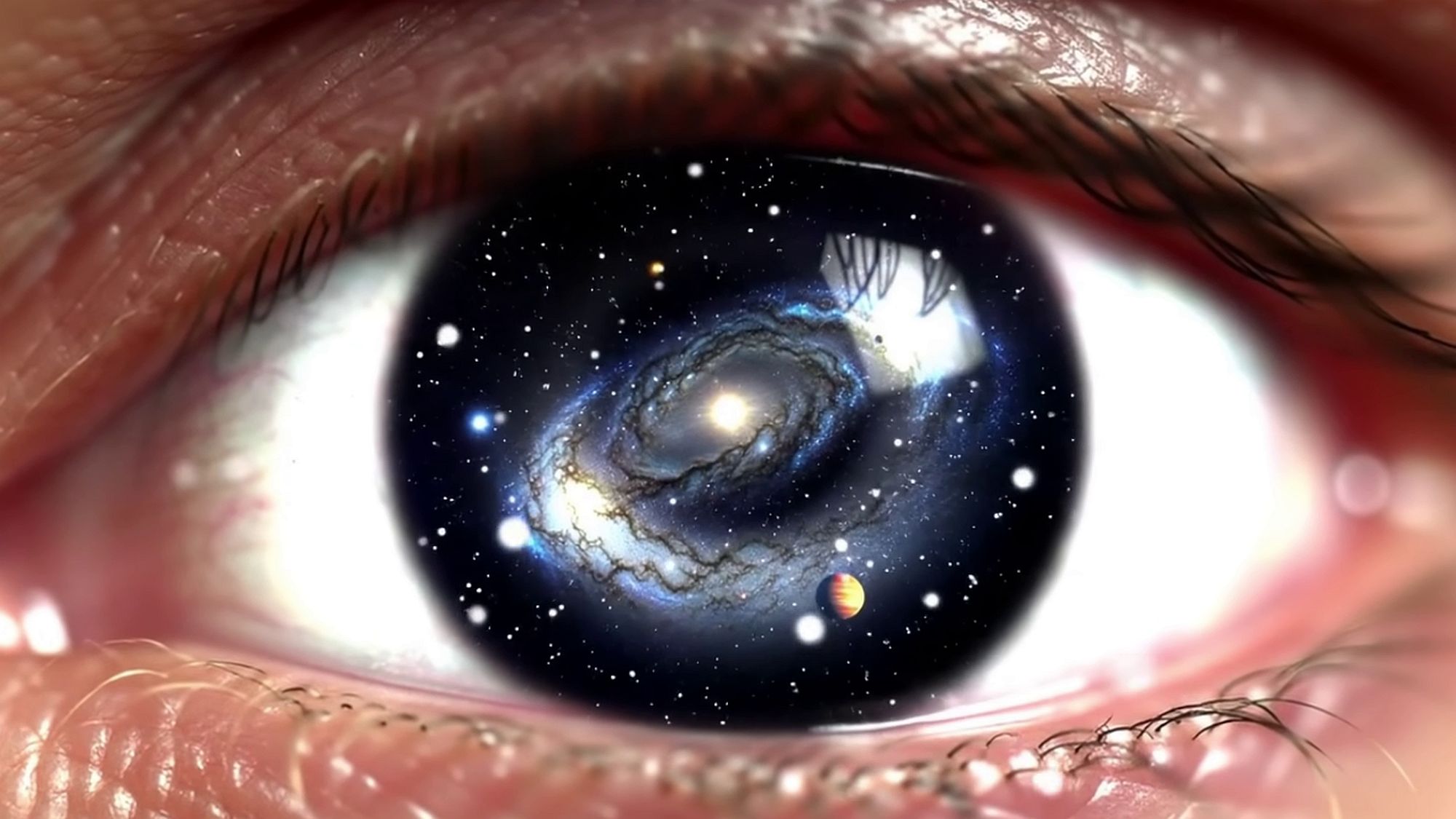Interview with Eric, Citizen Scientist, discussing string theory
Setting: A picturesque villa in Crete, surrounded by lush olive groves and the shimmering Aegean Sea in the distance. The air is filled with the scent of orange blossoms. The gentle rustling of trees sets a tranquil backdrop. Sunlight filters through the open patio, bathing the room in a warm glow as Eric, a passionate citizen scientist, prepares to discuss his ideas.

Interviewer: Thank you for inviting me here in this beautiful setting, Eric. It seems an inspiring place to discuss complex topics like string theory.
Eric: Smiling Thank you! The beauty of nature often sparks curiosity. Now, where shall we begin?
Interviewer: Let’s dive right into string theory. It’s a fascinating area of study. Could you explain the concept of a graviton for us?
Eric: Certainly! In string theory, a graviton is represented by a closed string. Specifically, certain looped particles can function as gravitons. What’s crucial to understand is that elementary particles are viewed simply as different vibrational modes of these one-dimensional strings.
He gestures towards a vibrant garden, where a butterfly flits by, reflecting on the vibrational states of nature.
Eric: The graviton is hypothetically the quantum of gravity. It is identified with a unique vibrational state of a closed string—one whose ends are joined to form a continuous loop. However, not every closed string represents a graviton. There are various states a closed string can exhibit.
Interviewer: It’s interesting how strings can embody multiple states. Now, shifting gears slightly, can you talk about photons?
Eric: Absolutely. Photons, as you might know, travel along paths known as null geodesics. Here in Crete, we have a beautiful view of the horizon. However, photons travel through spacetime in a manner that the spacetime interval along their paths is considered zero.
He pauses, contemplating the waves breaking gently on the shore.
Eric: In general relativity, mass and energy curve spacetime, and photons follow these geodesics. This means that while a photon’s journey might span billions of years from our perspective, it experiences no passage of time itself. Its proper time remains zero.
Interviewer: But surely, that raises questions about the concept of a “photon’s perspective”?
Eric: Precisely! It’s a point of contention. While mathematics suggests that the proper time is zero, it would be misleading to speak of a photon having a perspective or experience. There’s no valid inertial reference frame where a photon is at rest.
He leans back, his eyes scanning the horizon.
Eric: When we consider a photon, even if it has traversed vast distances, it doesn’t actually skip over history. Instead, it follows a well-defined path through the curved spacetime, regardless of its own “clock” being permanently unmoving.
Interviewer: Fascinating. So, do all photons follow straight paths in curved spacetime, or can some form loops?
Eric: In curved spacetime, some photons may indeed follow paths that create loops. This is a characteristic of certain spacetimes with unique properties or topologies. However, this isn’t a universal trait; it heavily depends on the overall structure of spacetime.
As a cool breeze wafts through the patio, he continues.
Eric: In classical string theory, looped strings are intriguingly analogous to gravitons. It’s not that a photon on a loop becomes a graviton, but it opens discussions about the underlying connections between particles.
Interviewer: Speaking of loops, could you elaborate on closed timelike curves (CTCs)?
Eric: Certainly. A closed timelike curve is a theoretical concept in spacetime. If one were to travel along it, you’d return to the same point in both space and time. It is a bit like one of those winding paths leading back to where they started.
The sound of laughter from a nearby group of children playing strikes a balance with the scientific gravity of the conversation.
Eric: Imagine, if you will, time flowing like a straight line from the past to the future. A CTC would allow for a circular time path. Though it presents extraordinary implications, it only arises under very unusual conditions within the solutions of Einstein’s equations in general relativity.
Interviewer: It takes quite some imagination to grasp such ideas! Thank you, Eric, for sharing your insights amidst this beautiful backdrop.

They conclude the interview as the sun dips below the horizon, casting a warm glow on the villa. It serves as a perfect metaphor for the blend of time and theories explored.
